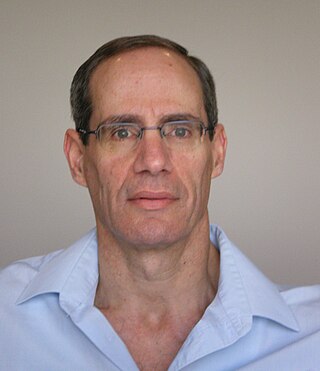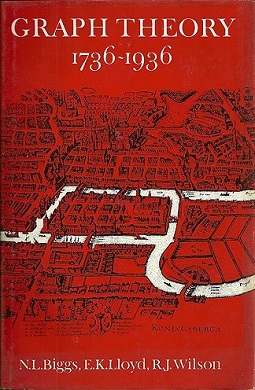
Coding theory is the study of the properties of codes and their respective fitness for specific applications. Codes are used for data compression, cryptography, error detection and correction, data transmission and data storage. Codes are studied by various scientific disciplines—such as information theory, electrical engineering, mathematics, linguistics, and computer science—for the purpose of designing efficient and reliable data transmission methods. This typically involves the removal of redundancy and the correction or detection of errors in the transmitted data.

In mathematics and electronics engineering, a binary Golay code is a type of linear error-correcting code used in digital communications. The binary Golay code, along with the ternary Golay code, has a particularly deep and interesting connection to the theory of finite sporadic groups in mathematics. These codes are named in honor of Marcel J. E. Golay whose 1949 paper introducing them has been called, by E. R. Berlekamp, the "best single published page" in coding theory.
In coding theory, the Singleton bound, named after Richard Collom Singleton, is a relatively crude upper bound on the size of an arbitrary block code with block length , size and minimum distance . It is also known as the Joshibound. proved by Joshi (1958) and even earlier by Komamiya (1953).
In mathematics and computer science, in the field of coding theory, the Hamming bound is a limit on the parameters of an arbitrary block code: it is also known as the sphere-packing bound or the volume bound from an interpretation in terms of packing balls in the Hamming metric into the space of all possible words. It gives an important limitation on the efficiency with which any error-correcting code can utilize the space in which its code words are embedded. A code that attains the Hamming bound is said to be a perfect code.
Vladimir Iosifovich Levenshtein was a Russian and Soviet scientist who did research in information theory, error-correcting codes, and combinatorial design. Among other contributions, he is known for the Levenshtein distance and a Levenshtein algorithm, which he developed in 1965.
A timeline of events related to information theory, quantum information theory and statistical physics, data compression, error correcting codes and related subjects.
In computing, telecommunication, information theory, and coding theory, forward error correction (FEC) or channel coding is a technique used for controlling errors in data transmission over unreliable or noisy communication channels.

In statistics and coding theory, a Hamming space is usually the set of all binary strings of length N. It is used in the theory of coding signals and transmission.

Noga Alon is an Israeli mathematician and a professor of mathematics at Princeton University noted for his contributions to combinatorics and theoretical computer science, having authored hundreds of papers.

Vera Pless was an American mathematician who specialized in combinatorics and coding theory. She was professor emerita at the University of Illinois at Chicago.
Analytic Combinatorics is a book on the mathematics of combinatorial enumeration, using generating functions and complex analysis to understand the growth rates of the numbers of combinatorial objects. It was written by Philippe Flajolet and Robert Sedgewick, and published by the Cambridge University Press in 2009. It won the Leroy P. Steele Prize in 2019.
Combinatorics of Finite Geometries is an undergraduate mathematics textbook on finite geometry by Lynn Batten. It was published by Cambridge University Press in 1986 with a second edition in 1997 (ISBN 0-521-59014-0).

Markov Chains and Mixing Times is a book on Markov chain mixing times. The second edition was written by David A. Levin, and Yuval Peres. Elizabeth Wilmer was a co-author on the first edition and is credited as a contributor to the second edition. The first edition was published in 2009 by the American Mathematical Society, with an expanded second edition in 2017.
Combinatorics of Experimental Design is a textbook on the design of experiments, a subject that connects applications in statistics to the theory of combinatorial mathematics. It was written by mathematician Anne Penfold Street and her daughter, statistician Deborah Street, and published in 1987 by the Oxford University Press under their Clarendon Press imprint.

Graph Theory, 1736–1936 is a book in the history of mathematics on graph theory. It focuses on the foundational documents of the field, beginning with the 1736 paper of Leonhard Euler on the Seven Bridges of Königsberg and ending with the first textbook on the subject, published in 1936 by Dénes Kőnig. Graph Theory, 1736–1936 was edited by Norman L. Biggs, E. Keith Lloyd, and Robin J. Wilson, and published in 1976 by the Clarendon Press. The Oxford University Press published a paperback second edition in 1986, with a corrected reprint in 1998.
Lectures in Geometric Combinatorics is a textbook on polyhedral combinatorics. It was written by Rekha R. Thomas, based on a course given by Thomas at the 2004 Park City Mathematics Institute, and published by the American Mathematical Society and Institute for Advanced Study in 2006, as volume 33 of their Student Mathematical Library book series.
Convex Polyhedra is a book on the mathematics of convex polyhedra, written by Soviet mathematician Aleksandr Danilovich Aleksandrov, and originally published in Russian in 1950, under the title Выпуклые многогранники. It was translated into German by Wilhelm Süss as Konvexe Polyeder in 1958. An updated edition, translated into English by Nurlan S. Dairbekov, Semën Samsonovich Kutateladze and Alexei B. Sossinsky, with added material by Victor Zalgaller, L. A. Shor, and Yu. A. Volkov, was published as Convex Polyhedra by Springer-Verlag in 2005.
Convex Polytopes is a graduate-level mathematics textbook about convex polytopes, higher-dimensional generalizations of three-dimensional convex polyhedra. It was written by Branko Grünbaum, with contributions from Victor Klee, Micha Perles, and G. C. Shephard, and published in 1967 by John Wiley & Sons. It went out of print in 1970. A second edition, prepared with the assistance of Volker Kaibel, Victor Klee, and Günter M. Ziegler, was published by Springer-Verlag in 2003, as volume 221 of their book series Graduate Texts in Mathematics.
Introduction to Lattices and Order is a mathematical textbook on order theory by Brian A. Davey and Hilary Priestley. It was published by the Cambridge University Press in their Cambridge Mathematical Textbooks series in 1990, with a second edition in 2002. The second edition is significantly different in its topics and organization, and was revised to incorporate recent developments in the area, especially in its applications to computer science. The Basic Library List Committee of the Mathematical Association of America has suggested its inclusion in undergraduate mathematics libraries.
The Symmetries of Things is a book on mathematical symmetry and the symmetries of geometric objects, aimed at audiences of multiple levels. It was written over the course of many years by John Horton Conway, Heidi Burgiel, and Chaim Goodman-Strauss, and published in 2008 by A K Peters. Its critical reception was mixed, with some reviewers praising it for its accessible and thorough approach to its material and for its many inspiring illustrations, and others complaining about its inconsistent level of difficulty, overuse of neologisms, failure to adequately cite prior work, and technical errors.







